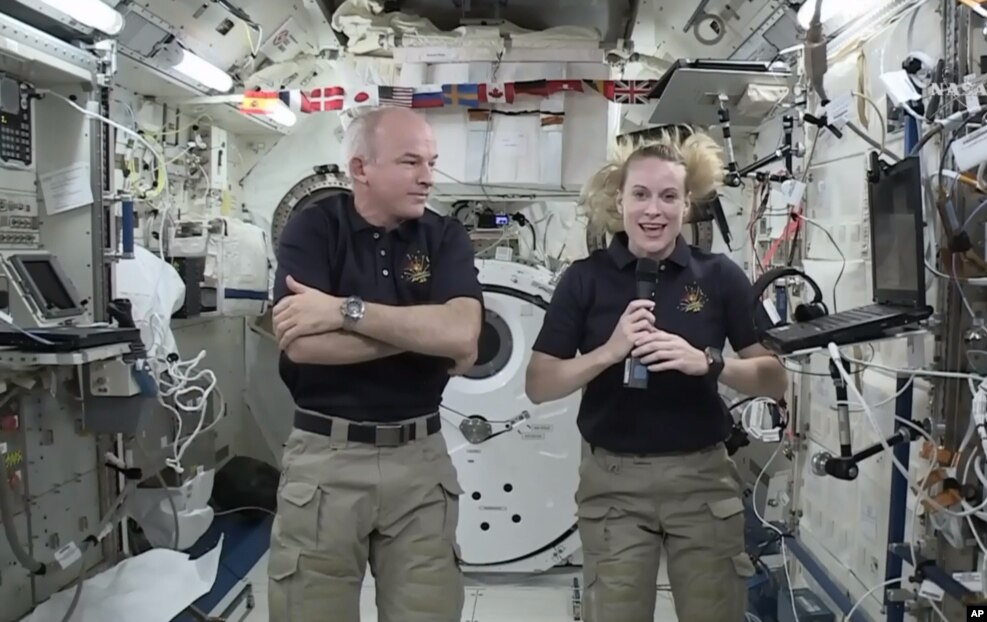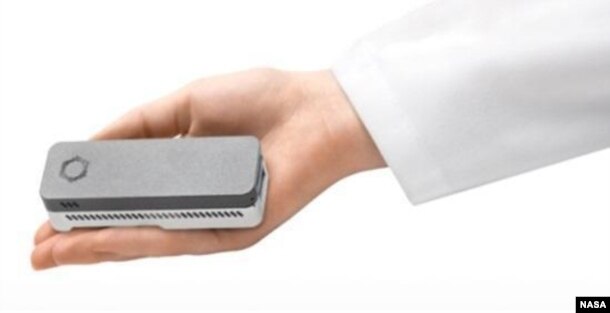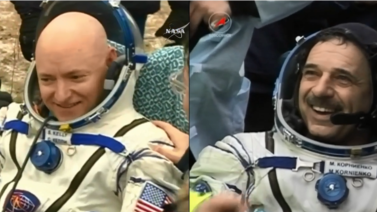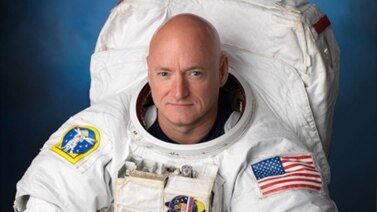
On Earth, American astronaut Kate Rubins researched some of the deadliest diseases like Ebola. Now, while orbiting the planet in the International Space Station, she will be testing a new device that analyzes genetic material.
Her job is to use a new kind of DNA sequencing machine and find out if it can be used in space.
DNA is short for deoxyribonucleic acid. It is made of chains of molecules that carry the instructions for the development and growth of living things. Genes are made of DNA.
The device Rubins is testing is called the MinION DNA sequencer. It is made by the company Oxford Nanopore technologies.
The sequencer is small -- about half the size of a smartphone. It sequences, or finds the order of, the DNA molecules found in cells.

The small device could have a big effect on understanding astronauts' health in space.
The tests will show whether the technology can be used later to understand microbes in the space station. It might also help find genetic changes in the astronauts, and it might be able to diagnose illness in the future.
The National Aeronautics and Space Administration is the U.S. space agency. NASA said the device might even be able to test materials from Mars for signs of DNA-based life in future missions.
“And, uh, the hatch now opening to the Soyuz MS-01 spacecraft and the arrival of three new crew members on the International Space Station. Kate Rubins, first through the hatch...”
Rubins arrived at the space station in July. She is a trained microbiologist. She is known for her work with dangerous organisms that cause diseases.
“So I think that people always look at my background and think I'm going to do something crazy, science fiction on the space station. But we do have a lot of controls up here and anything we bring up to the space station has to be checked for safety...”
Safety is so important because the space station is a “closed loop environment.” That means the air and water is recycled.
Rubins says NASA scientists came up with an “incredibly well thought out set of experiments.” The experiments include testing a virus and bacteria that are used in many labs on Earth and are not harmful.
One of the first things the astronauts need to find out is how well the DNA sequencer operates in space, where there is almost no gravity.
“Technology behaves differently up here. Fluids behave differently up here. Bubbles form in fluids. And so it's going to be a really interesting piece of equipment just to check out and to understand.”
Sarah Wallace is a microbiologist at NASA's Johnson Space Center in Houston, Texas. She calls the MinION sequencer a “game changer” in space.
Until now, samples from space had to be frozen and returned to Earth to be studied. If the device is successful, scientists will be able to see what is happening to human beings and to cells in real time.
The machine could be used to help diagnose illnesses in astronauts living on the station. It also could help astronauts understand which drugs would work on disease-causing microbes if someone is sick at the station. This could help limit using valuable medications that cannot be quickly replaced in space.
Wallace explains that the MinION sequencer operates differently from other DNA sequencers. Others usually take 24 to 48 hours to run, then stop. But up in space, this sequencer will display its results as it works.
“Within minutes of loading your sample,” Wallace says, “you're starting to get the sequence data back.”
If all goes well, the machine will be able to tell which genes are “turning on and off” in response to being in space. This is important, Wallace says, because “we know that there are changes in space flight.” But scientists still do not know how and why the astronauts' bodies are changing.
“We need to know the how and the why,” Wallace says. This is important for NASA to know to be able to send people on longer space flights to places like Mars.
In the future, Astronaut Rubins would like to use the DNA sequencer to learn more about possible microbes that might live in the station's water system and elsewhere on the space station.
They have “wonderful clean water” in the station, Rubins says. But she wonders if microbes could be living in the water system after it has been in place for 15 years. The water on the station comes from recycled urine and condensate - sweat and exhaled breath.
She says there are “interesting scientific questions” to answer about how people live in space.
“We've also got a fantastic research environment to really learn some completely novel things about how human beings behave in a closed loop environment.”
This device joins other instruments on the space station that can be used to discover problems, including one device that can test single genes.
“These kinds of small, portable genomic technologies are going to let us look, in real time, what's actually happening to bone degradation, for example. What's happening to your immune system. ”
The technology already has been used successfully on Earth. During the recent Ebola outbreak in Africa, it was used for tests in rural and poor areas where it worked quickly, and well.
I'm Anne Ball.
Anne Ball wrote this story for Learning English with additional information from Reuters. Mario Ritter was the editor.
We want to hear from you. Write to us in the Comments Section, and find us on our Facebook page.
Words in This Story
analyze - v. to study, to look at closely
sequence - v. to place in the correct order
microbe - n. a very small, simple living thing that requires a microscope to see
game changer - adj. something that represents a big change
diagnose - v. to recognize a disease or problem
condensate - n. something that condenses
sweat - n. water released from the skin
exhale - v. to breathe out
novel - adj. new, unusual

